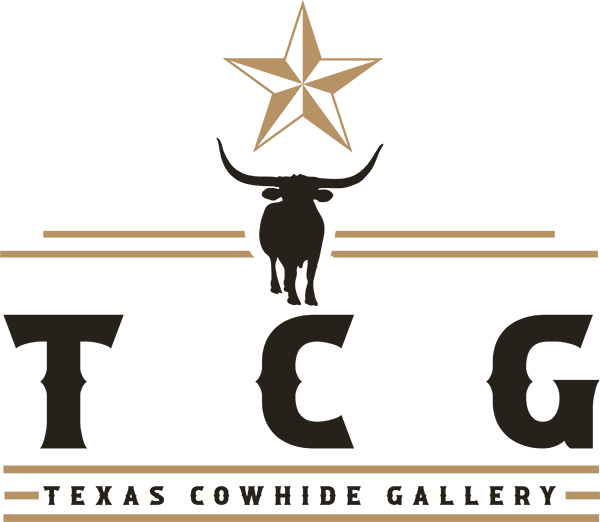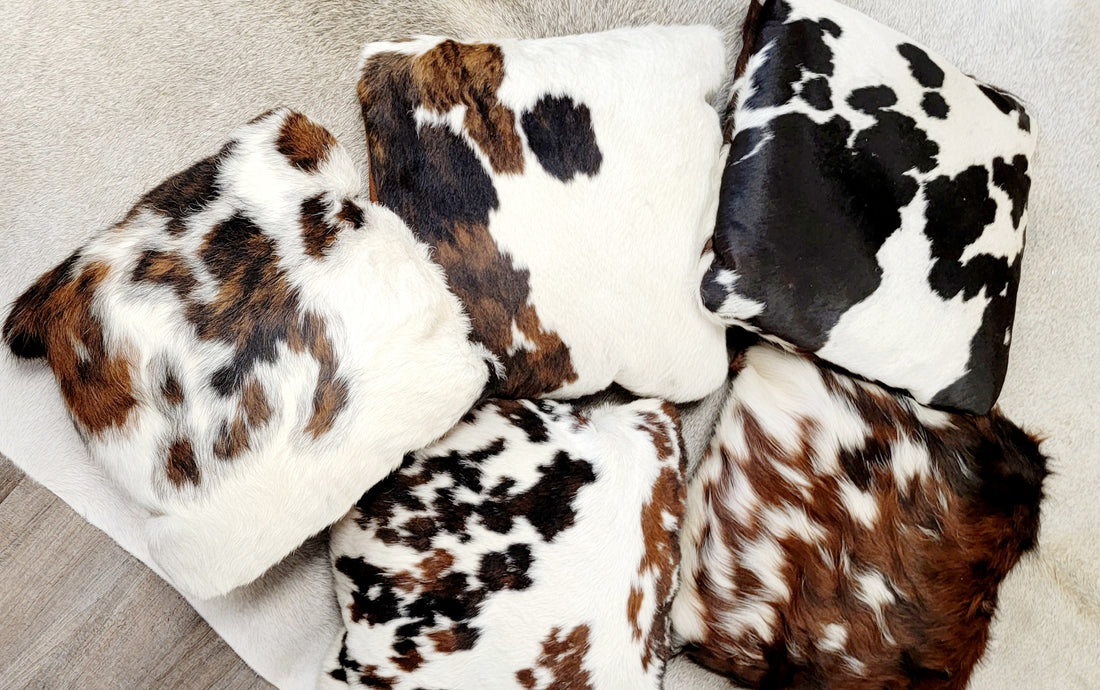Cowhide is a versatile and popular material that has been used for centuries in various applications. From fashion to interior design, cowhide can add a touch of natural beauty and rustic charm to any space. If you're a beginner and curious about cowhide, you're in the right place. In this comprehensive guide, we'll explore everything you need to know about cowhide, from its origins to its modern uses.
The Origins of Cowhide
The origin of cowhide can be traced back to the cattle industry, which has a long history dating back thousands of years. Cowhide is essentially the natural skin of cattle, primarily cows, that is processed and tanned to create a versatile material used in various products. It's important to note that cowhide is a byproduct of the meat industry, which means it is derived from the hides of animals that are raised for their meat and other products.
The process of turning raw cowhide into a usable material involves several steps, such as salting to preserve the hides, tanning to prevent decomposition and make the material pliable, and finishing to achieve the desired texture and appearance. This careful processing ensures that cowhide becomes a durable, soft, and attractive material with a range of applications, from fashion to interior design, making it a sustainable choice as it makes use of a resource that would otherwise go to waste.
Types of Cowhide
Cowhide comes in a variety of types, each with its unique characteristics and aesthetics, making it a versatile material that can be adapted to various purposes.
Natural Cowhide
Natural cowhide is the most basic type, showcasing the unaltered appearance of the cow's skin. These hides feature the characteristic black, brown, or white markings of the animal, creating a rustic and authentic look. Natural cowhide is prized for its genuine, earthy appeal, making it a popular choice for those who appreciate a traditional and unadulterated appearance.
Printed Cowhide
Printed cowhide is dyed and stamped with various patterns to create an unconventional appearance. This type of cowhide is particularly popular for those seeking a bold and unique aesthetic. It can feature patterns like zebra stripes, leopard spots, or geometric designs, allowing for a wide range of creative possibilities in interior design and fashion.
Patchwork Cowhide
Patchwork cowhide products are crafted from smaller pieces of cowhide that are carefully stitched together, creating a mosaic-like effect. These pieces can be in various colors and patterns, allowing for creative and eye-catching designs. Patchwork cowhide rugs, furniture, and accessories are often sought after for their distinctive and artistic appeal.
Metallic Cowhide
Metallic cowhide is a modern twist on the classic natural cowhide. These hides are dyed with metallic colors like gold, silver, or bronze, adding a touch of shimmer and luxury to the traditional look. Metallic cowhide is perfect for those who want to make a statement and introduce a touch of glamour into their decor or fashion choices.
Tricolor Cowhide

Tricolor cowhide combines three different shades to create a unique and captivating visual effect. These hides are often arranged in a tripartite pattern, typically consisting of black, brown, and white sections. This blend of colors adds a dynamic and eye-catching element to the decor, making tricolor cowhide a popular choice for rugs, furniture, and accessories.
Uses of Cowhide
Cowhide is a versatile material that finds a wide array of uses across different industries and applications, offering both functionality and aesthetic appeal. Here, we'll explore some of the primary uses of cowhide:
- Cowhide Rugs:One of the most popular uses of cowhide is in the creation of stylish and durable rugs. Cowhide rugs come in various colors and patterns, making them suitable for a broad range of interior design styles. They add a touch of natural warmth and texture to any room, whether it's a modern, rustic, or traditional setting.
- Cowhide Furniture:Cowhide is commonly used to upholster furniture items like chairs, ottomans, sofas, and more. Furniture pieces adorned with cowhide not only offer comfort and functionality but also make a bold fashion statement in any living space. The natural variations in cowhide create one-of-a-kind furniture that can be a centerpiece of your home decor.
- Cowhide Accessories:From cowhide pillows to lampshades, coasters, and table runners, cowhide accessories can bring an air of elegance and sophistication to your home decor. These accents are available in various colors and patterns, allowing you to mix and match to achieve the desired ambiance and style.
- Fashion:In the world of fashion, cowhide is used to create a variety of products, including leather jackets, handbags, belts, and boots. The durability and unique grain patterns of cowhide make it a sought-after material for fashion enthusiasts. It's favored for its strength and the timeless appeal it adds to clothing and accessories.
Maintenance and Care
Proper maintenance and care for cowhide products are essential to ensure their longevity and to keep them looking their best. Whether you have cowhide rugs, furniture, or accessories, following these guidelines will help you preserve their natural beauty:
Regular Cleaning
It's important to regularly clean your cowhide items to remove dust and debris. For cowhide rugs, you can gently shake them outside to dislodge loose particles. Alternatively, a vacuum cleaner that comes with a brush-type attachment can be used to get rid of theaccumulated dust. Be sure to set the vacuum to a low or no-suction setting to prevent the hide from being pulled up.
Spot Cleaning
Mishaps are bound to happen,but in such cases, time is of the essence, and the stains must be addressed at the earliest. When a spill occurs, blot don’t rub the affected area with a clean, dry cloth to absorb as much liquid as possible. For stubborn stains, you can use a mixture of mild detergent and water. Rub the stained area with a gentle cloth, working from the outside of the stain towards the center. Rinse the area with a clean, damp cloth, and then pat it dry with a dry cloth. Always test any cleaning solution on an inconspicuous area first to ensure it won't damage the cowhide.
Rotation
To ensure even wear and fading, periodically rotate your cowhide rugs or furniture. This will help prevent one area from receiving more exposure to sunlight and foot traffic than others.
Protection from Direct Sunlight
Cowhide can be sensitive to direct sunlight and heat. Prolonged exposure can lead to drying, cracking, and fading. Therefore, it's advisable to position cowhide furniture away from direct sunlight or heat sources, such as radiators or fireplaces. If you have a cowhide rug, consider using window treatments like blinds or curtains to protect it from the sun's intense rays.
Brushing and Conditioning
To maintain the softness and luster of your cowhide, occasional brushing is recommended. Use a soft-bristle brush to gently brush the hair in the natural direction of the cowhide. For extra care, you can use a cowhide conditioner, which helps keep the hide supple and moisturized.
Avoid Moisture
Cowhide is a natural material and can be sensitive to moisture. As such, you must ensure your cowhide products are kept in a dry environment. If they do get wet, allow them to air dry naturally, but do not expose them to direct heat sources or use a hairdryer, as this can damage the hide.
Professional Cleaning
For extensive cleaning or for stubborn stains that you can't remove with home remedies, consider seeking professional cleaning services specializing in cowhide products. They have the expertise and tools to handle more challenging cleaning tasks.
Markers of Authentic Cowhide Products

Distinguishing authentic cowhide from imitation or lower-quality materials is crucial when purchasing cowhide products. There are several key markers that can help you identify genuine cowhide:
- Natural Variations:Authentic cowhide displays unique, natural markings and variations, including irregular spots, color gradients, and hair patterns. These distinct characteristics are the result of the cow's individual history and environment and serve as a clear indicator of authenticity. If you notice consistent, repeating patterns, it's likely a sign that the cowhide is not genuine.
- Hair Length and Texture:Genuine cowhide maintains the natural texture and length of the cow's hair. The hair should be coarse, glossy, and tightly attached to the hide. If the hair appears overly uniform or unnaturally soft, it may be a sign that the cowhide is not authentic.
- Scent:Authentic cowhide may have a faint, natural scent that can resemble leather or the outdoors. If the cowhide product has a strong chemical or synthetic odor, it could indicate that it is not made from genuine cowhide.
- Backing Material:Check the backing of the cowhide product. Authentic cowhide often has a soft, suede-like backing, while synthetic or imitation materials may have a plastic or fabric backing.
- Natural Edges:A genuine cowhide typically retains its natural edges, which are irregular and untrimmed. These edges may have the occasional hair still attached, showing that the hide has not undergone extensive processing. If the edges appear uniform or precisely cut, it may suggest that the cowhide is not authentic.
Final Thoughts
Cowhide is a versatile and beautiful material that can enhance your home decor and fashion style. Whether you choose cowhide rugs or accessories, understanding its origins, types, and care is essential to make the most of this natural material.
If you too desire to invest in quality cowhide pieces, you can reach out to us at Cowhide Gallery – your one-stop shop for all things cowhide. With an immense focus on sustainability, our team works tirelessly to ensure all our pieces are made from ethically sourced cowhide. Contact us today to begin browsing our collection.

